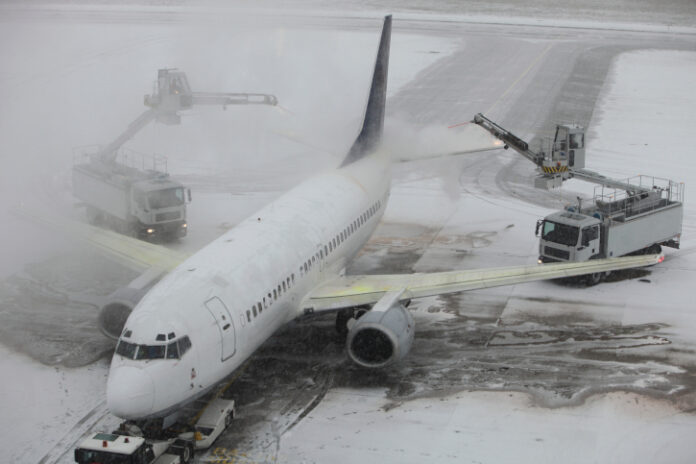The U.S. Environmental Protection Agency (EPA) finalized carbon dioxide emissions (CO2) limits for domestically manufactured commercial and large business aircraft, aligning U.S. standards with CO2 emissions limits set by the International Civil Aviation Organization (ICAO).
EPA’s December 28, 2020 action makes the Trump administration the first presidential administration ever to set CO2 emission standards for commercial aircraft.
Approximately 75 percent of large commercial aircraft manufactured in the United States are sold on international markets. The Trump administration says its action ensures domestic aircraft manufacturers will to continue be able to be sold and compete in the global marketplace for airplanes.
“The U.S. leads the world in reducing greenhouse gas emissions and today’s historic action that finalizes the first-ever GHG standard for aircraft will continue this trend,” said Andrew Wheeler, EPA administrator, in a statement. “This is the fourth concrete final regulation the Trump Administration’s pragmatic approach to climate action has produced meaningful results without unnecessarily sacrificing American jobs or important domestic industries like our aircraft manufacturers.”
EPA estimates the aircraft covered by the rule account for approximately 10 percent of all transportation related carbon dioxide emissions in the United States and 3 percent of all global emissions.
U.S. Input into Standards
ICAO’s standards were developed with feasibility and safety input from international aircraft manufacturers, EPA, and the Federal Aviation Administration.
ICAO adopted its standards in 2017. Since then, United States’ aircraft manufacturers report they have adopted technologies and implemented manufacturing processes which ensure most of their aircraft already meet or exceed international standards.
“The standards in this rule reflect U.S. efforts to secure the highest practicable degree of international uniformity in aviation regulations and standards,” states EPA’s final rule. “The standards also meet the EPA’s obligation under section 231 of the Clean Air Act (CAA) to adopt GHG standards for certain classes of airplanes as a result of the 2016 ‘Finding That Greenhouse Gas Emissions From Aircraft Cause or Contribute to Air Pollution That May Reasonably Be Anticipated To Endanger Public Health and Welfare.’”
Under EPA’s rule all newly designed aircraft covered by the rule are required meet ICAO’s standards by January 1, 2023, and aircraft designs currently being manufactured under the previous standards are required be modified to meet the newly established emissions limits by January 1, 2028, or they will be unable to be sold on international markets.
H. Sterling Burnett, Ph.D. (hsburnett@heartland.org) is the managing editor of Environment & Climate News.


























